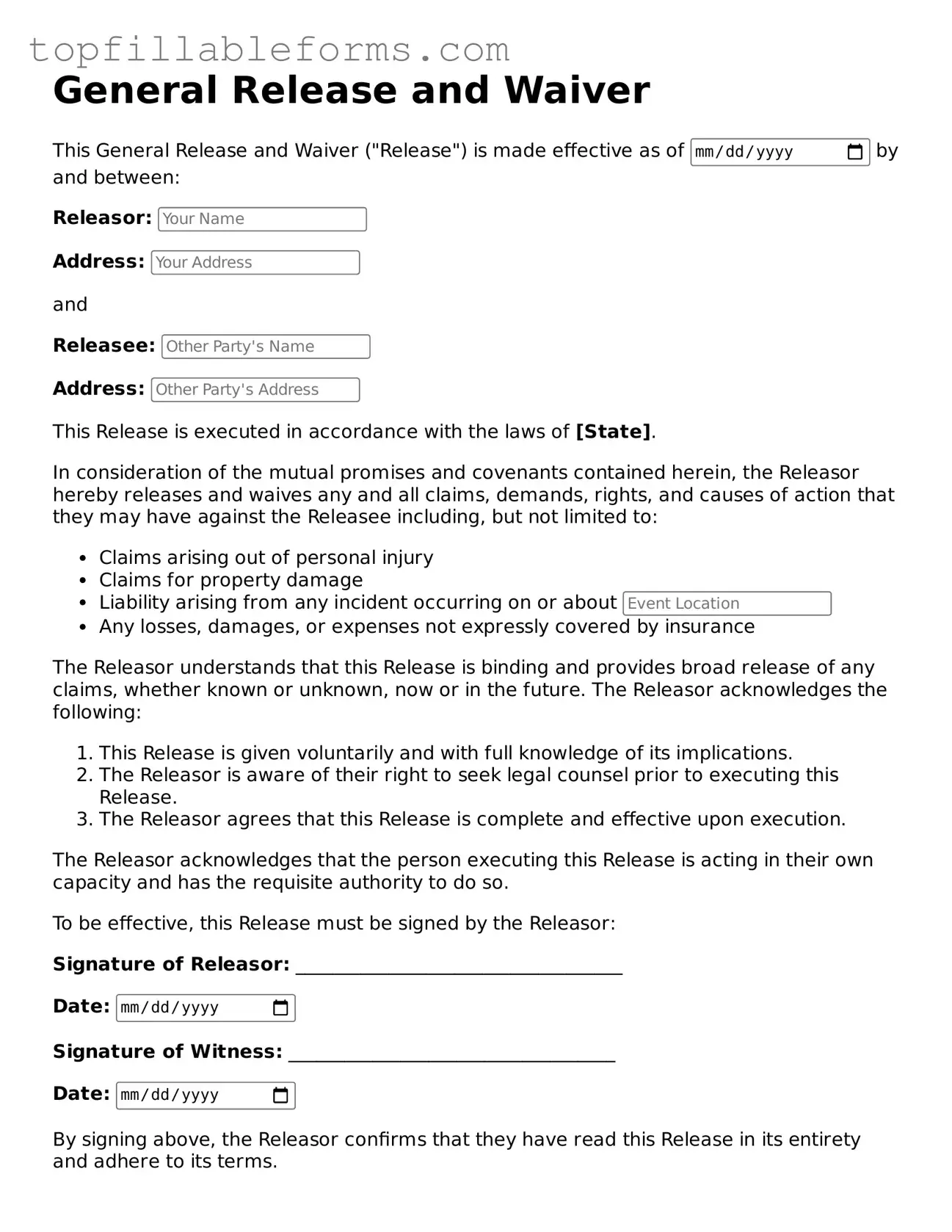Free Release of Liability Form
A Release of Liability form is a legal document that protects one party from being held liable for any injuries or damages that may occur during an activity. This form is commonly used in various contexts, such as sports events, recreational activities, and other situations where risks are involved. By signing this document, participants acknowledge the risks and agree not to hold the organizer responsible for any potential harm.
Open Release of Liability Editor Here
